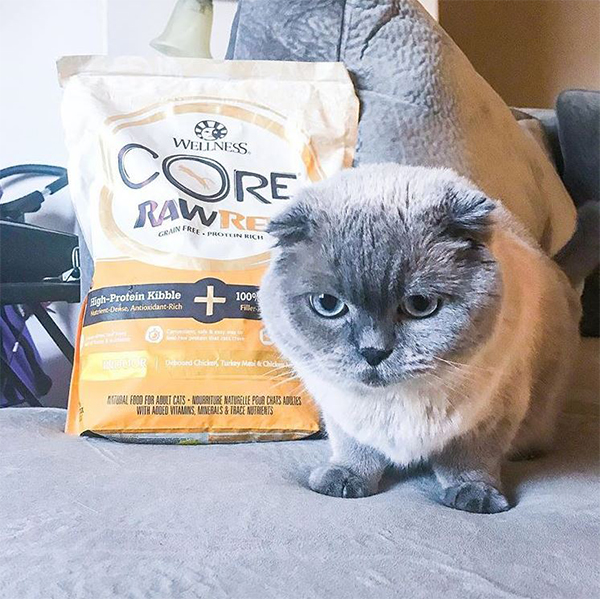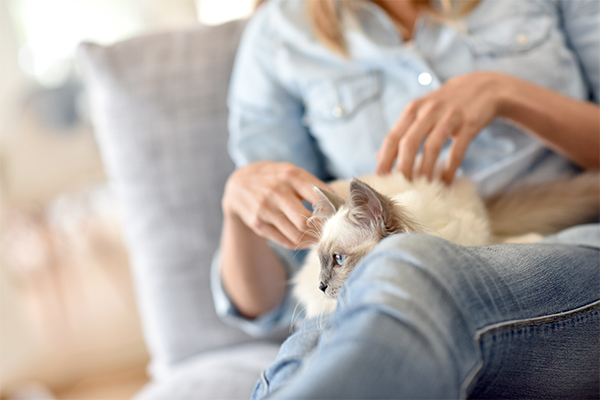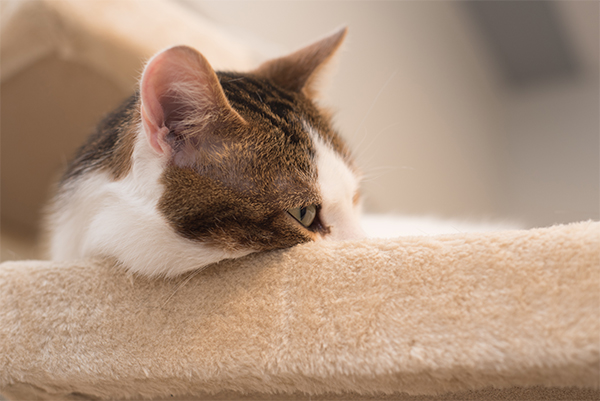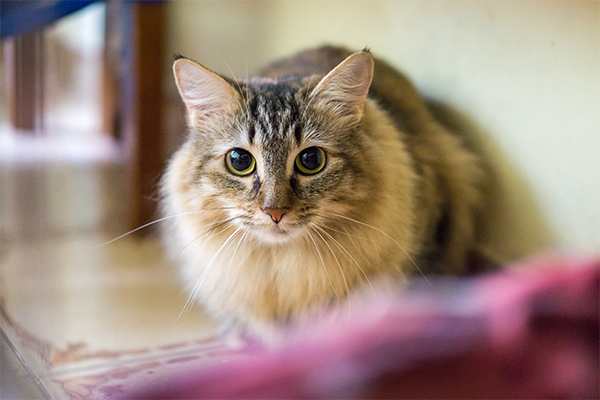Cat Behavior Expert Weighs In: How to Reduce Your Cat’s Stress Level

Stress. We hear that word often as it relates to humans but it can be a big problem for cats as well. While stress can’t be totally avoided in life and a certain amount is necessary to help us all survive (Acute stress triggers fight or flight response), we can limit how much cats endure.
Types of Stress in Cats
Acute stress:
This is something cat parents more easily recognize in cats. Just picture your cat on the veterinarian’s exam table or remember the day you brought home a second pet or moved to a new house.
Chronic stress:
This can easily be overlooked. This is the day-to-day stress that a cat may experience from any number of causes. Behavior may change so gradually that cat parents miss things such as change in activity level, appetite, grooming habits or litter box usage. Short-term stress is something the body is equipped to handle but long-term, chronic stress can play a major role in the onset of behavior problems and even disease.
A Veterinary Check-up Comes First
Granted, a trip to the veterinarian is often stressful in itself, but if you notice a change in behavior, weight, appearance, litter box habits, appetite, or water consumption, have your cat checked out. Don’t skip this all-important first step.
Reducing Your Cat’s Stress
Here’s a list of 10 tips to guide you on ways to reduce some common stress triggers.
1. Maintain Your Cat’s Health
Don’t skip annual veterinary wellness visits. Catching a potential medical problem in the early stages increases the odds of successful treatment and maintenance. Also, keep up at-home health routines such as good nutrition, parasite control, dental care, grooming and nail care.

2. Less-Stressful Veterinary Visits
Stress is one of the most common reasons cats don’t see the veterinarian as often as dogs do. You can reduce that stress in a few easy ways. First, get your cat comfortable with the carrier. Leave the carrier out and periodically toss treats near it. This helps take the fear out of the carrier’s presence. When going to the veterinary clinic, bring an extra towel which can be used to cover the carrier opening to give kitty more privacy. When sitting in the waiting room, hold the carrier on your lap or on the seat next to you. Avoid placing the carrier on the floor since that can be more stressful. If you have a carrier where the top can be detached from the bottom, during the exam you can let your cat remain in the bottom part.
3. Consistent Cat Training
Reduce stress by making sure everyone in the family is on the same page with training. For example, if kitty isn’t allowed on the table by one family member but is permitted by another, it sends a confusing and stressful mixed message. Train with kindness and consistency.
4. Create a Peaceful Mealtime
It starts with feeding a high quality food that’s appropriate for your cat’s age and health. Next, create a peaceful mealtime setting by keeping the feeding station clean and inviting. Use a food bowl that’s a comfortable size and shape and doesn’t cause your cat’s whiskers to get squished. Locate the feeding area in a quiet place that’s free from sudden noises. Place food and water a little distance apart as many cats don’t like water right next to food. In a multicat household, give each cat an individual food bowl because cats aren’t social eaters. You can discourage one cat from nosing another cat out of the bowl if they each have their own separate dishes. If necessary, feed cats in separate rooms to reduce stress.

To encourage successful mealtimes, add a grain-free topper like CORE Simply Shreds to your cat’s meal.
5. Your Cat’s Social Interaction
Never force your cat to interact. Let kitty set the pace of how much he wants to engage. Don’t insist on holding or petting your cat if he doesn’t want it. If he doesn’t mind being held, always put him down before he starts to struggle. Keep the experience positive. You can give him incentives to be more sociable, such as offering a treat or playtime, but always let it be his choice of whether to accept or decline.

6. Happy Litter Box Set-up
Make sure the litter box is the right size and type for your cat. It should be 1 ½ times the length of your cat from tip of nose to base of tail. As for litter, most prefer soft, sandy, scoopable litter. Texture is important to cats. Scoop the litter box at least twice a day to ensure there’s always enough clean area for elimination. Locate the box in a quiet spot that’s convenient and comfortable to access. In a multicat home, provide numerous litter boxes scattered throughout the house so one cat doesn’t have to cross another cat’s area. The general rule is to have one more box than number of cats.
7. Environment and Resources
Cats live in a vertical world. Provide cat trees, perches or other elevated locations to create security and comfort. Cats also like to alternate between being hidden and being visible. Offer hiding places for those times when kitty wants to watch the household goings-on as an undetected spectator. Indoor cats have to share overlapping territories so reduce stress by making sure each cat has comfortable places for napping, hiding and resource availability within their preferred area. This can go a long way in increasing multi-cat harmony.

8. Cat Communication
Cats are masters of communication and just their body language alone can tell you so much about what’s going on inside their heads. Observe your cat’s body language and become educated about whether he’s saying I’d rather not be disturbed now or please play with me.

9. Stress-Reducing Playtime
Playtime is more than just fun and exercise. Playtime releases good brain chemicals and helps a cat develop positive associations with their environment and people around them. Playtime is beneficial to reducing stress on an everyday basis as well as when you’re dealing with a particularly stressful event. Engage in interactive playtime daily and also create fun activities for your cat for when you aren’t home. This can involve puzzle feeders, tunnels and other activities to keep your cat stimulated.
10. Less-Stressful Life Transitions
Cats are creatures of habit but unfortunately, life is full of changes. Some changes are unavoidably sudden but if there’s an upcoming anticipated change, ease your cat through it gradually. Whether it’s the addition of a new baby, new cat or any other disruption in his normal routine. Go at a slow pace and let him take small steps through the adjustment. Your cat will appreciate the extra effort made to help him through life’s surprises.




